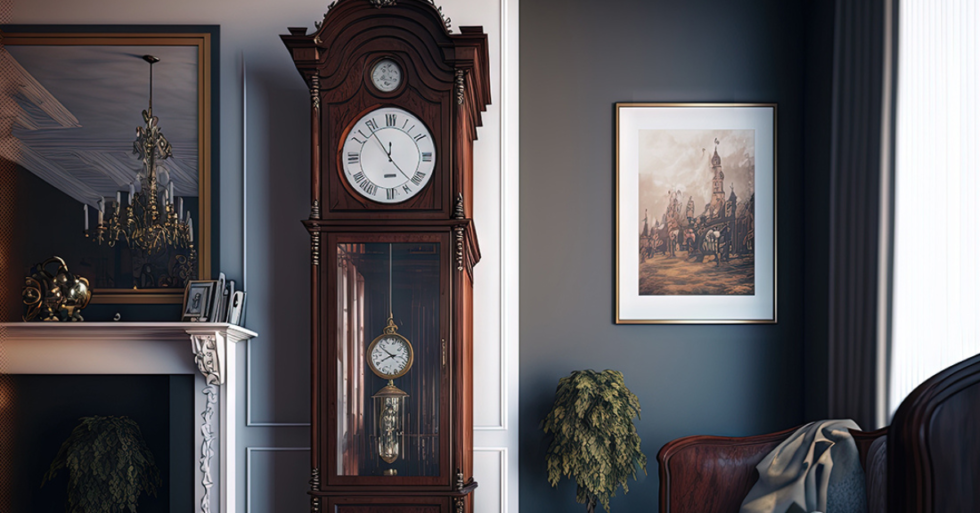
Grandfather clocks, also known as longcase clocks or tall-case clocks, have a rich history and timeless elegance that has captivated people for centuries. These iconic timepieces not only serve the practical function of telling time but also add a touch of sophistication and charm to any room they adorn. In this comprehensive guide, we will delve into the fascinating world of grandfather clocks, exploring their history, construction, mechanisms, and significance in today’s world.
History of Grandfather Clocks
The origins of the grandfather clock can be traced back to the late 17th century in England. The credit for inventing the first grandfather clock is often given to English clockmaker William Clement, who is believed to have crafted one around 1670. However, it was another English clockmaker, George Graham, who refined the design and popularized the term “grandfather clock” in the early 18th century.
During this period, the longcase clock became a symbol of wealth and prestige, with intricate designs and high-quality craftsmanship adorning the homes of aristocrats and nobles. As the Industrial Revolution swept across Europe, the production of grandfather clocks became more streamlined, making them accessible to a broader range of people.
Anatomy of a Grandfather Clock
Case
The case of a grandfather clock typically consists of a tall wooden cabinet, often made of oak, walnut, mahogany, or cherry wood. The design can vary widely, from simple and understated to ornate and decorative, depending on the style and era in which it was crafted. The case serves both a functional and aesthetic purpose, protecting the delicate clock mechanism while also enhancing the overall appearance of the timepiece.
Dial
The dial, or clock face, is usually located at the top of the grandfather clock and features Roman numerals to indicate the hours. In addition to telling time, the dial may also display additional features such as a moon phase indicator, calendar, or chime selection. The hands of the clock are typically made of brass and are driven by the clock’s movement to indicate the time.
Movement
The movement, or mechanism, is the heart of the grandfather clock, responsible for keeping accurate time and powering any additional features such as chimes or pendulums. Traditionally, grandfather clocks used mechanical movements, which rely on weights and pendulums to regulate the passage of time. However, modern grandfather clocks may also incorporate quartz movements for greater accuracy and reliability.
Pendulum
The pendulum is perhaps the most iconic feature of a grandfather clock, swinging back and forth with hypnotic precision to regulate the clock’s timekeeping. The length of the pendulum determines the clock’s timing accuracy, with longer pendulums resulting in slower timekeeping. Pendulums are often made of brass or wood and are carefully calibrated to ensure accurate timekeeping.
Types of Grandfather Clocks
Traditional Grandfather Clocks
Traditional grandfather clocks adhere to the classic design and construction principles established centuries ago, with wooden cases, mechanical movements, and swinging pendulums. These timeless timepieces evoke a sense of nostalgia and elegance, making them a popular choice for traditional and vintage-inspired interiors.
Contemporary Grandfather Clocks
Contemporary grandfather clocks offer a modern twist on the classic design, with sleeker lines, minimalist aesthetics, and innovative features. While still retaining the essential elements of a grandfather clock, such as the tall case and pendulum, contemporary designs often incorporate materials such as glass, metal, and acrylic for a more contemporary look.
Antique Grandfather Clocks
Antique grandfather clocks hold a special allure for collectors and enthusiasts, with their rich history, exquisite craftsmanship, and unique character. These vintage timepieces may vary in style, from ornate Baroque designs to simple Shaker-inspired aesthetics, but they all share a sense of timeless beauty and charm.
Maintenance and Care
Like any mechanical or electronic device, grandfather clocks require regular maintenance and care to ensure optimal performance and longevity. Here are some tips for keeping your grandfather clock in top condition:
Regular Winding: If your grandfather clock has a mechanical movement, be sure to wind it regularly according to the manufacturer’s instructions. Overwinding can damage the movement, so it’s essential to exercise caution and follow the recommended winding schedule.
Pendulum Adjustment: Periodically check the pendulum to ensure it is swinging freely and evenly. If the clock is running too fast or too slow, you may need to adjust the pendulum length or regulate the escapement mechanism for optimal timekeeping.
Dust and Clean: Dust and dirt can accumulate inside the clock case and affect its performance. Use a soft, dry cloth or brush to gently remove dust from the dial, hands, and movement components. Avoid using harsh chemicals or abrasive cleaners, as these can damage the delicate finishes.
Professional Servicing: If your grandfather clock requires more extensive repairs or servicing, it’s best to consult a professional clockmaker or horologist with experience working on antique or vintage timepieces. They can diagnose any issues and perform necessary repairs or adjustments to restore your clock to its former glory.
The Significance of Grandfather Clocks Today
In today’s fast-paced digital world, grandfather clocks may seem like relics of a bygone era. However, these timeless timepieces continue to hold a special place in many homes and hearts around the world. Beyond their practical function of telling time, grandfather clocks evoke a sense of nostalgia, tradition, and craftsmanship that is increasingly rare in our mass-produced society.
For collectors and enthusiasts, grandfather clocks represent more than just a piece of furniture or a decorative accent—they are tangible connections to the past, reminders of a simpler time when craftsmanship and attention to detail were valued above all else. Whether passed down through generations as family heirlooms or acquired as cherished additions to a home’s decor, grandfather clocks serve as enduring symbols of tradition, elegance, and timeless beauty.
Conclusion
Grandfather clocks have stood the test of time, transcending centuries and trends to remain cherished symbols of elegance, craftsmanship, and tradition. From their humble beginnings in 17th-century England to their continued popularity in today’s modern world, these iconic timepieces continue to captivate us with their timeless beauty and allure. Whether adorning the grand halls of stately homes or gracing the cozy corners of contemporary living spaces, grandfather clocks remind us of the enduring power of craftsmanship, history, and the simple pleasure of marking the passage of time.









